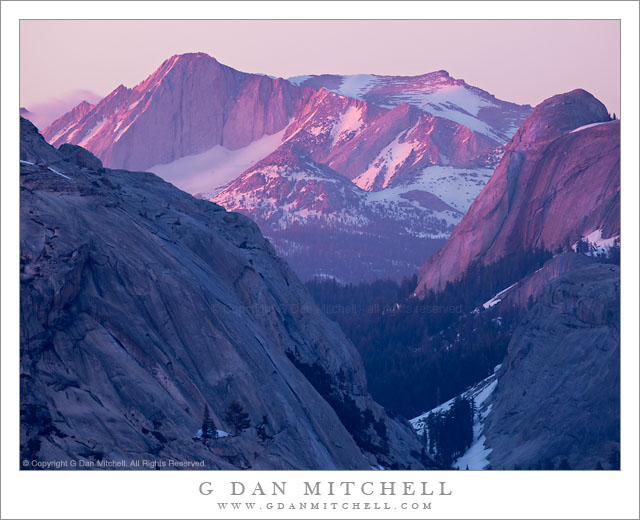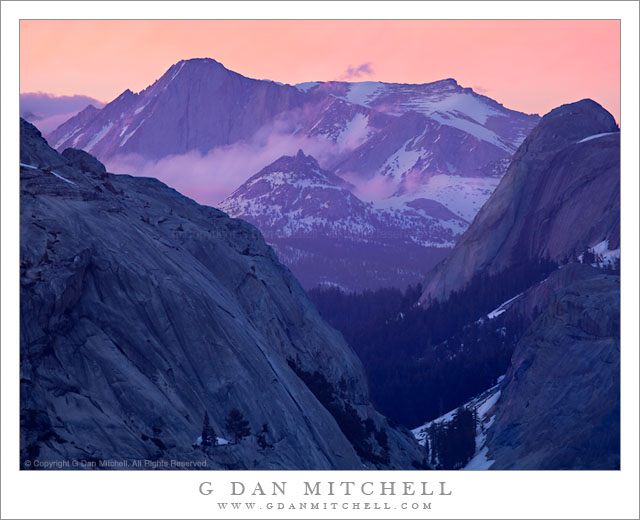Late Afternoon, Tenaya Lake. Yosemite National Park, California. June 18, 2011. © Copyright G Dan Mitchell – all rights reserved.
Ice covers the surface of Tenaya Lake on the day of the mid-June opening of Tioga Pass Road as afternoon clouds cluster around the summit of Mount Conness, Yosemite National Park.
After the wild sunset-illuminated versions of this scene that I’ve posted recently, I thought it might be a relief to post something more subtle! This photograph was also made on the evening of June 18, the day that Tioga Pass Road opened for the 2011 season. A bit earlier I had photographed along the shoreline of Tenaya Lake – the ice-covered area in the lower portion of this image – where I had juxtaposed melting ice, deep blue water, and interesting clouds. When I finished there I had a decision to make – whether to head back up toward the pass, continue to photograph around the lake, or try to get a shot of Mount Conness from Olmsted Point. Since I had been in contact with a client concerning Mount Conness photographs just a few days earlier, I decided to try that third choice.
When I arrived at Olmsted, conditions were a bit unpromising. Clouds had come up over the Sierra crest and Conness was completely obscured. In addition, a certain type of gloomy haze and cloudiness was taking much of the energy out of the scene. Clouds to the west were washing out the light, too. Many times I don’t give up immediately in situations like this, at least not until I’ve spent a bit of time trying to get a sense of where things might be headed. (Ultimately on this evening that turned out to be a good decision, as near sunset one of the most intense displays of Sierra evening color occurred… but that it a story I’ve already told in earlier posts.) As I watched, the clouds around Conness began to move a bit and every so often a bit of the tip of the mountain would poke through. During one of these moments, a bit of light filtered through the high clouds from the west and glanced across the slopes of Polly Dome and struck the upper reaches of Medlicott Dome.
G Dan Mitchell Photography
Flickr | Twitter (follow me) | Facebook (“Like” my page) | 500px.com | LinkedIn | Email
Text, photographs, and other media are © Copyright G Dan Mitchell (or others when indicated) and are not in the public domain and may not be used on websites, blogs, or in other media without advance permission from G Dan Mitchell.



